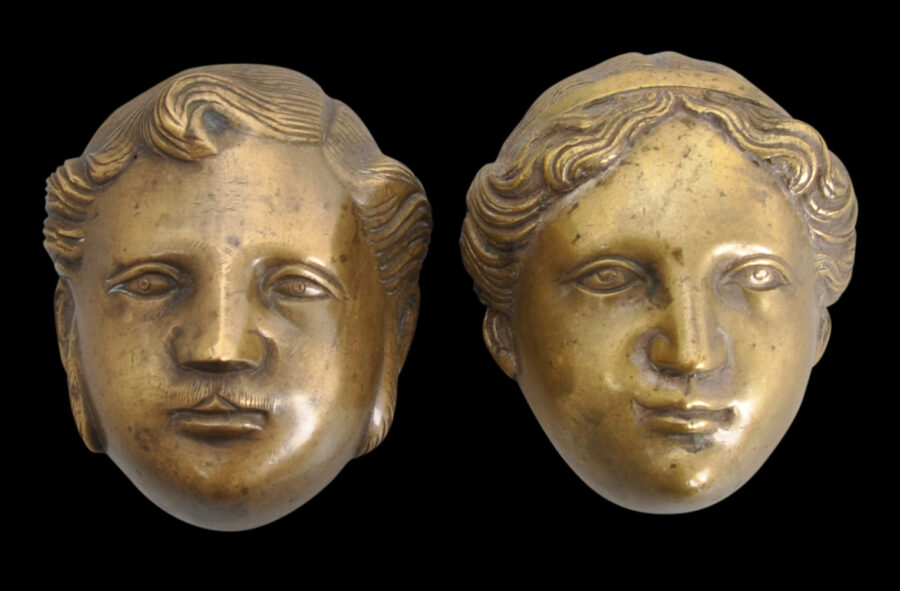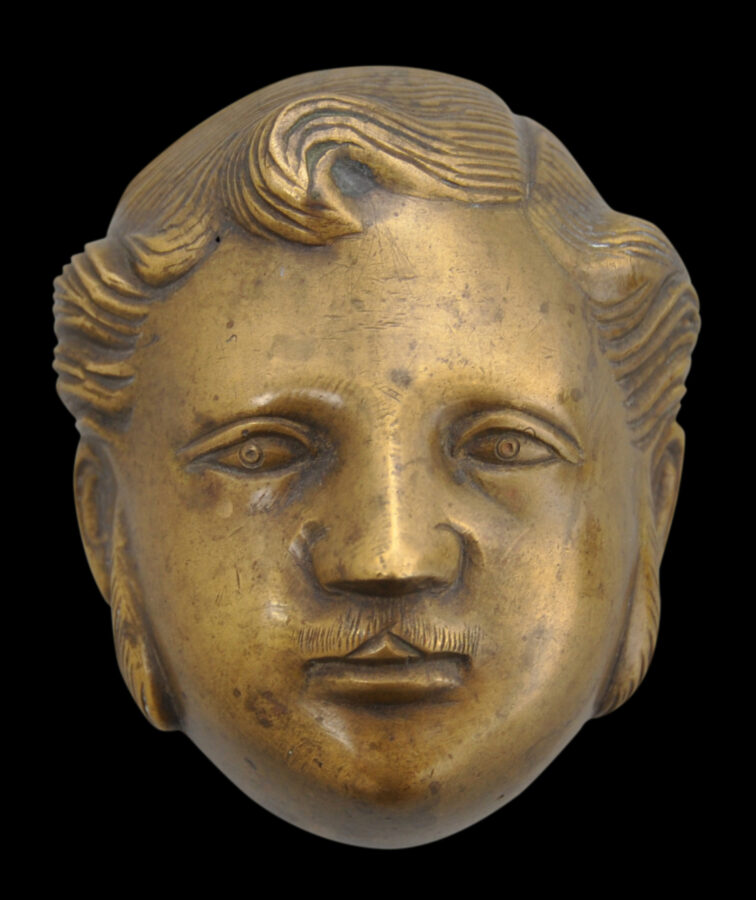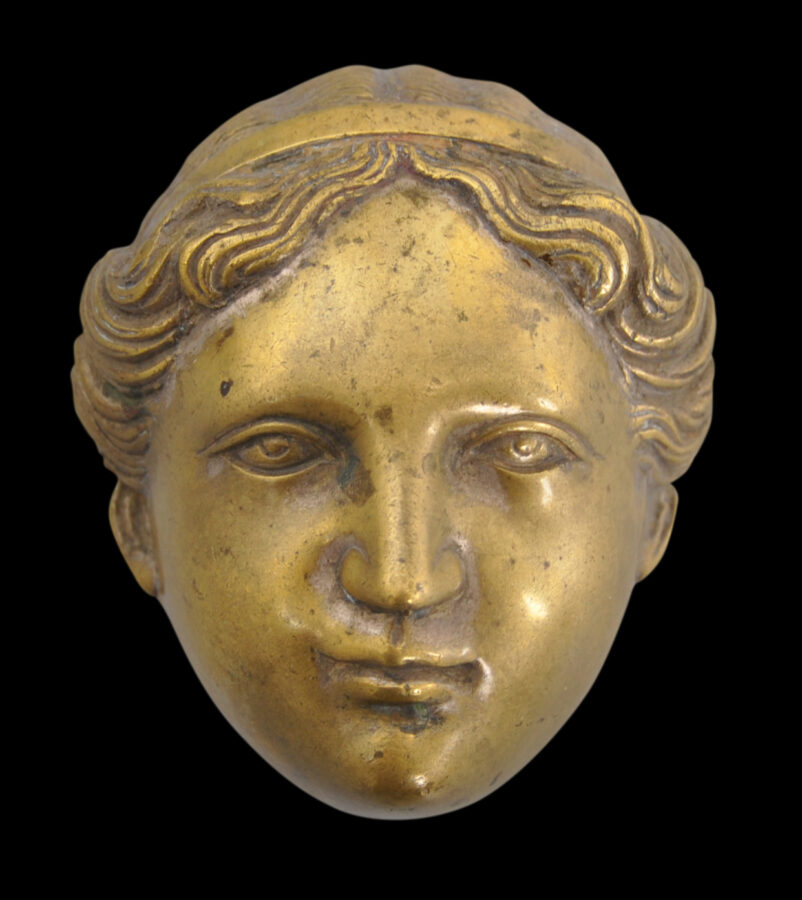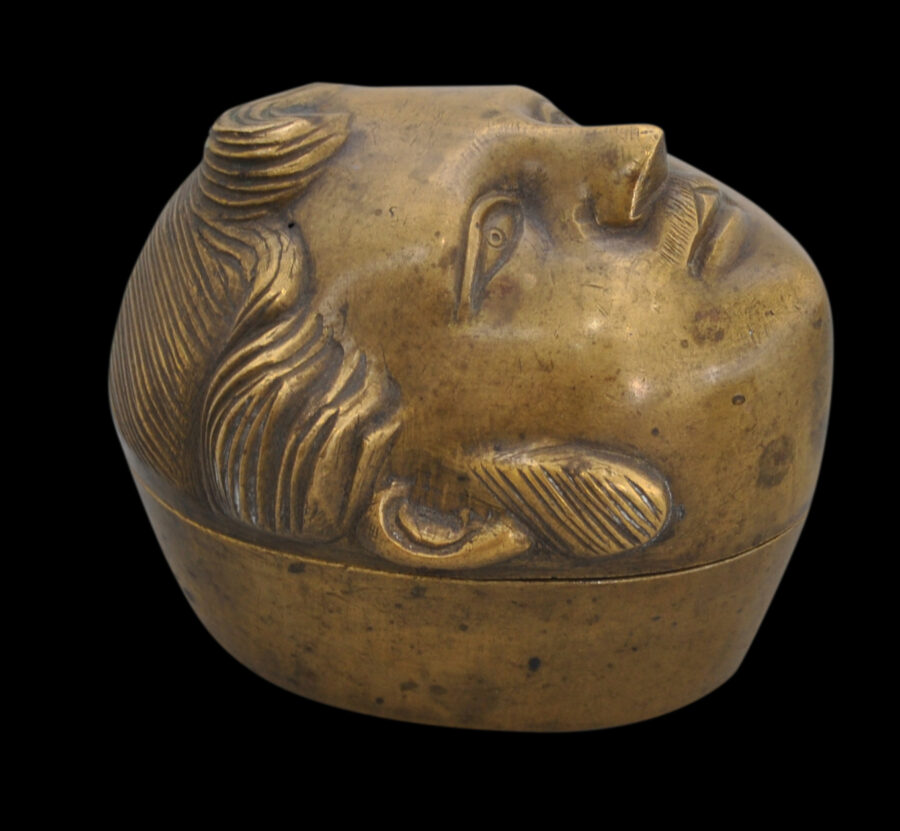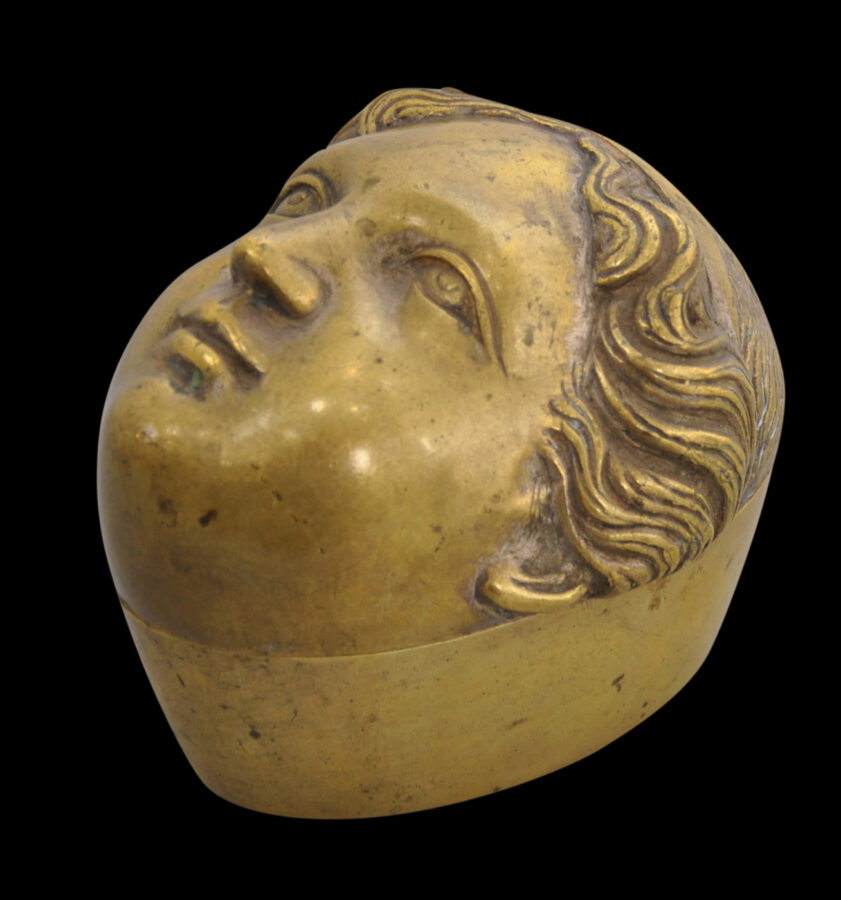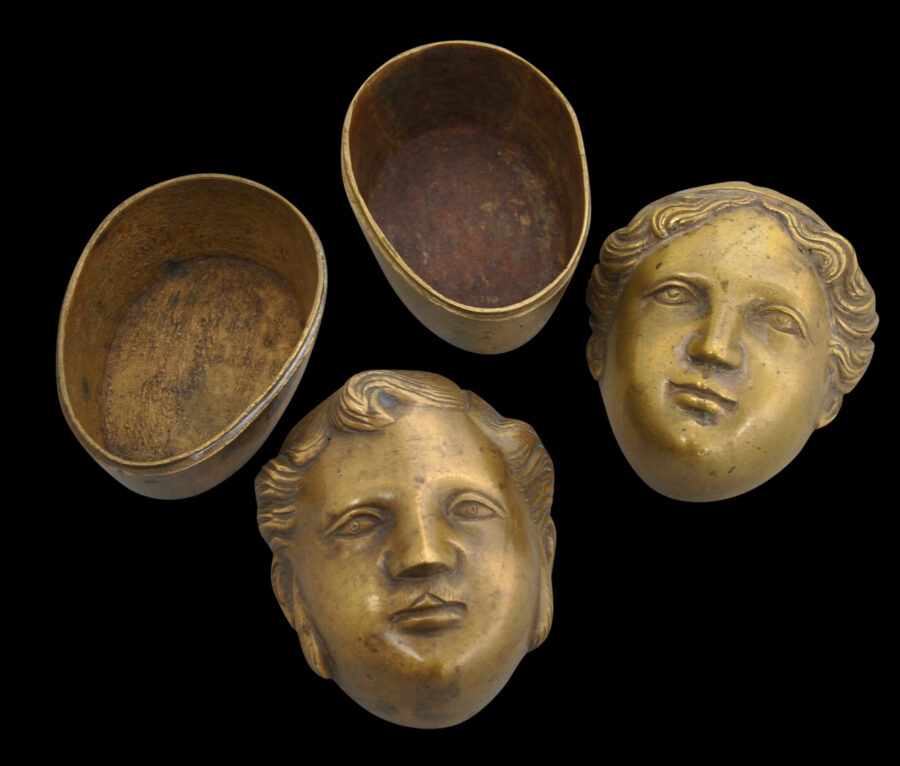Enquiry about object: 7161
Pair of Indian Betel Boxes (Pandans) Shaped as Queen Victoria & Prince Albert
India, probably Calcutta circa 1840
length: approximately 10cm, width: approximately 8cm, depth: 8.2cm, combined weight: 843g
Provenance
formerly in the collection of Henry Brownrigg, author of 'Betel Cutters from the Samuel Eilenberg Collection,' Thames & Hudson, 1992.
This pair of unusual and special brass boxes are in the form of the young Queen Victoria and her consort Prince Albert, and would have been used to hold betel nut in India. (Betel or paan as it was known in India was a mild social narcotic that was chewed at the end of meals or in the company of others.)
The images or the Queen and prince are relatively youthful and are most likely in the first decade of Victoria’s rule, so this suggests a dating of the boxes of not later than 1840.
The boxes are very well made and the halves fit together well. The bases have pleasing form that widen out to accommodate the heads of the two rulers.
The box in Victoria’s form retains traces of what is probably silvering, so it is likely that the two boxes originally were silver plated.
India was ruled over by Britain as the colonial power in the 19th century and statues of Victoria and Albert were erected across the sub-continent. And in 1876, Victoria assumed the additional title of Empress of India, although prior to that had effectively been the colony’s head of state.
The boxes are in excellent condition. They are remarkable artefacts of their period.
References
Brownrigg, H., Betel Cutters from the Samuel Eilenberg Collection, Thames & Hudson, 1992.


